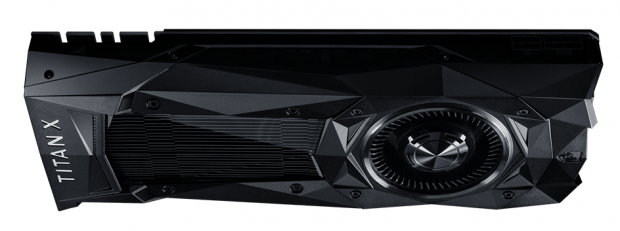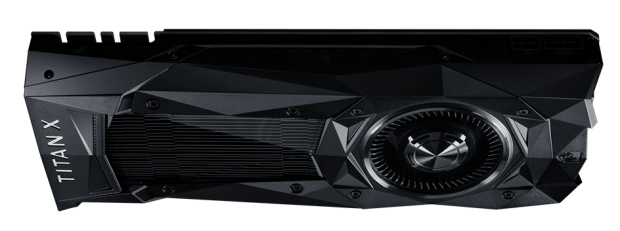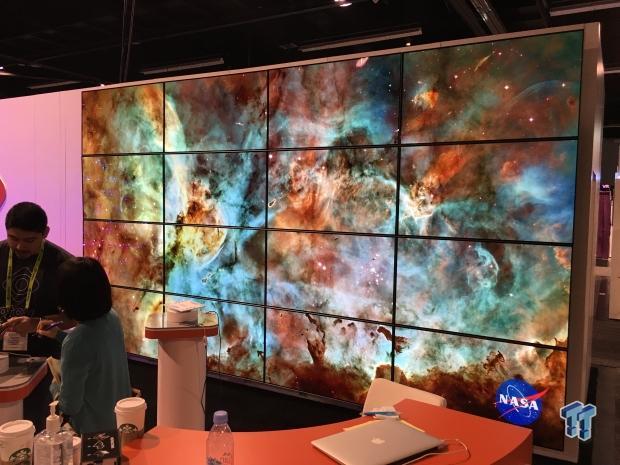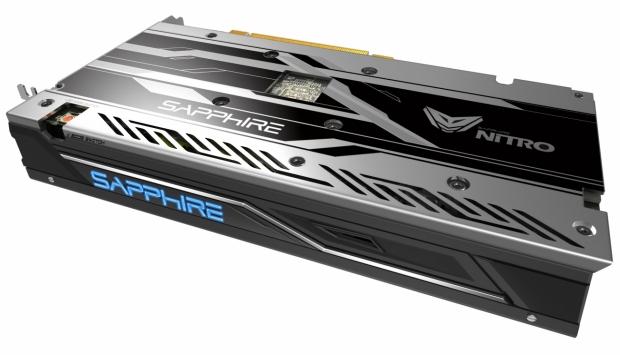Video Cards & GPUs News - Page 310
AMD's Radeon 16.7.3 drivers released, lots of bug fixes/improvements
AMD has released its new Radeon Software Crimson Edition 16.7.3 drivers, which include the usual bug fixes and performance improvements. You can download them right here.
Rise of the Tomb Raider enjoys another 10% performance on the Radeon RX 480 graphics card, thanks to the new RSCE 16.7.3 drivers. But there's also a bunch of bug fixes for popular games like Overwatch, Hitman, Total War: Warhammer, Dirt Rally, DOOM, and more. More games than ever have been fixed or improved with the RSCE 16.7.3 drivers.
If you want to check out all of the fixed and known issues with the new RSCE 16.7.3 drivers, check out AMD's support page.
Continue reading: AMD's Radeon 16.7.3 drivers released, lots of bug fixes/improvements (full post)
NVIDIA reportedly unveiling its mobile GTX 10 series GPUs at Gamescom
NVIDIA is reportedly preparing for the launch of its mobile GeForce GTX 10 GPUs for later this month, with NVIDIA allowing its notebook partners to unveil Pascal-powered gaming notebooks between August 17-21, when Gamescom 2016 takes place.
In terms of specifications, we don't know what to expect with the mobile GeForce GTX 1080, but we should expect it to be nearly identical to its desktop counterpart. Last year, NVIDIA unleashed the desktop GTX 980 for notebooks, providing desktop GTX 980 performance inside of a gaming notebook, and it was beyond impressive.
DigitTimes is behind the report, saying that ASUS, MSI, GIGABYTE and Clevo will have their new gaming notebooks on show with NVIDIA's new Pascal-based GeForce GPUs inside. DigiTimes adds that NVIDIA will remove the 'M' from the mobile GPUs in order to provide a streamlined path to GeForce graphics cards on both the desktop, and mobile side of things.
Continue reading: NVIDIA reportedly unveiling its mobile GTX 10 series GPUs at Gamescom (full post)
NVIDIA's new Titan X beats GTX 1080 by 29% at 4K in 3DMark
The release of NVIDIA's next-gen Titan X is right around the corner, with some leaked 3DMark results to whet our appetite before it launches on August 2. There aren't many samples being sent to reviewers, where I personally do not have a card - but I will be trying!
Now we're within a day of the launch, leaked 3DMark results are here to tease the performance of the Pascal-based Titan X graphics card. VideoCardz got its hands-on some 3DMark results, running the Fire Strike Performance and Fire Strike Ultra runs of 3DMark with some bloody impressive results.
The new Titan X scores 26,660 in 1080p run of Fire Strike versus the 21,603 from the GeForce GTX 1080 - an increase of 23%. In the 4K run of Fire Strike, the new Pascal-based Titan X beats the GeForce GTX 1080 by 29% - with the Titan X scoring 6532 against the GTX 1080 with 5043.
Continue reading: NVIDIA's new Titan X beats GTX 1080 by 29% at 4K in 3DMark (full post)
The new Titan X is up to 200% faster than the GeForce GTX Titan X
While NVIDIA hasn't sent us the new Pascal-based Titan X, there are some reviewers who have received their GP102-powered graphics card and are throwing it into synthetic testing to see how fast it really is.
The synthetic benchmark side of Titan X that was used was CuDNN, offering a huge 200% increase over the previous GeForce GTX Titan X (note, the new Titan X is just that 'Titan X' with the GeForce GTX branding dropped from the name). The new Titan X is using a new implementation of CuDNN, so the speedup is from both the software, and the improved hardware on Titan X.
Specifications wise, the new Titan X has 16% more CUDA cores and 42% higher GPU clocks - so in raw horsepower, we have a decent amount of hardware improvements. According to the benchmarks, we can expect the new Titan X to be 74% to 91% faster in Alexnet, 76% to 200% on OverFear, 74% to 84% on Inception and 91% to 98% in VGG.
Continue reading: The new Titan X is up to 200% faster than the GeForce GTX Titan X (full post)
AMD details their new Radeon RX 470 and RX 460 graphics cards
When AMD launched the Radeon RX 480 earlier this month, we saw the company focus on the $100-$300 market. Starting with a bang, AMD's first Polaris-based graphics card started at just $199 and now the cheaper, but still VR-ready graphics cards are here.
The new Radeon RX 470 and RX 460 have been detailed by the company, and will be released on August 4 and August 2, respectively. The Radeon RX 470 is a small graphics card, packing the Polaris architecture and promising to deliver 60FPS+ with AA enabled in nearly all of the best-looking games on the market at 1080p.
AMD's new Radeon RX 470 packs up to 4.9TFLOPS of performance with the GPU clocks at 926/1206MHz base and boost clocks, respectively. There's 4GB of GDDR5 RAM clocked at 6.6GHz on a 256-bit memory bus that is capable of 211GB/sec, and it all comes within a 120W TDP. This card is going to be immensely popular with gamers where NVIDIA's GeForce GTX 1060 which starts at $249, and with gamers who don't want to spend over $199 but want 1080p 60FPS performance.
Continue reading: AMD details their new Radeon RX 470 and RX 460 graphics cards (full post)
NVIDIA ordered to pay each GeForce GTX 970 $30 over VRAM controversy
It was over 18 months ago now that NVIDIA found itself in quite the predicament, with its GeForce GTX 970 advertised with 4GB of VRAM, but only had access to 3.5GB of it at high speeds, while the remaining 512MB was performance-limited.
NVIDIA agreed to settle 15 class-action lawsuits for undisclosed terms, but now the company has confirmed it will be paying each person who has a GeForce GTX 970, giving them $30 and covering $1.3 million in legal fees.
Right now this is only a preliminary settlement, so a court will still need to approve the terms before consumers can start claiming their $30. NVIDIA has said it will not be capping the total amount it will pay to consumers, which is actually surprising. Good guy NVIDIA, after all of the crap that happened 18 months ago.
Continue reading: NVIDIA ordered to pay each GeForce GTX 970 $30 over VRAM controversy (full post)
AMD Radeon Pro graphics card powers 16K display, or 15,360 x 8640
Siggraph 2016 - Walking through Siggraph 2016, there's something that caught my eye in a big way - Otoy had a 16K display on show, using 16 x 4K TVs, powered by AMD's new Radeon Pro graphics cards.
16K is pretty crazy, so let's clarify what we're talking about here:
It's virtually impossible to put into words what 16K looks like, but if you have seen a 4K TV or display before, 3840 x 2160 is made up of four times the pixels of a 1080p display. 16K, is made up of 16 of those 4K displays, which is made up of 32 x 1080p resolution. So, we're talking some mammoth numbers here.
Continue reading: AMD Radeon Pro graphics card powers 16K display, or 15,360 x 8640 (full post)
AMD's Radeon Pro SSG handles 8K 96FPS, thanks to an on-board M.2 SSD
Siggraph 2016 - AMD has announced its new Radeon Pro SSG graphics card, with it being one of the first under the new Radeon Pro branding, with AMD rebranding its FirePro graphics card range.
AMD's new Radeon Pro SSG is a super unique new way of professional graphics, as it has flash memory attached to the graphics card, which can see professional graphics solutions scale far beyond the 32GB limit we're at now. Instead of having a 32GB frame buffer, which might sound like a lot to gamers, it gets used very quickly with massive professional workloads.
Radeon Pro SSG uses flash memory that can scale into the terabytes, which means we'll see professional graphics cards with 1TB or 2TB of memory available. The flash memory has direct communication with the GPU but doesn't work in the way of High Bandwidth Memory (HBM) which is physically on the Interposer, with the GPU. Performance wise, the flash memory on Radeon Pro SSG can handle 8K video at 96FPS compared to the previous high-end FirePro graphics card that was only capable of 8K at 17FPS - a huge 5.6x increase in performance.
Continue reading: AMD's Radeon Pro SSG handles 8K 96FPS, thanks to an on-board M.2 SSD (full post)
AMD introduces Radeon Pro WX series, Polaris-based workstation cards
Siggraph 2016 - AMD has changed its entire professional graphics branding at Siggraph 2016, with Radeon Pro replacing the FirePro branding, bringing all of AMD's graphics cards under the Radeon umbrella under Radeon Technologies Group.
AMD has three new Radeon Pro WX professional graphics cards, with all of them powered by their new Polaris architecture. We have the Radeon Pro WX 4100, WX 5100 and the higher-end WX 7100 with AMD telling us that they will all be priced at under $1000, with the WX4100 and WX5100 being priced "well below" $1000. What does WX stand for? Workstation experience, which makes sense, and makes things easier to discern between Radeon RX (consumer graphics) and Radeon Pro WX (workstation graphics).
The traditional workstation industry is who AMD are targeting with the Radeon Pro WX series graphics cards, as the WX series will have companies like Dell or HP that will have specific requirements in the way of power use, or clock speeds so that their workstations will last for years and years.
Continue reading: AMD introduces Radeon Pro WX series, Polaris-based workstation cards (full post)
SAPPHIRE announces its new NITRO+ Radeon RX 480 graphics card
SAPPHIRE has just officially unveiled its new NITRO+ Radeon RX 480, which is positioned perfectly for 1080p and 1440p gaming.
The new NITRO+ Radeon RX 480 has the same 2304 stream processors as the AMD Radeon RX 480 reference card, with the Polaris 10 GPU overclocked to 1342MHz on boost. It has 8GB of GDDR5 clocked at 8GHz on a 256-bit memory bus, while the 4GB model has a boost clock of 1306MHz and has its 4GB of GDDR5 clocked at 1750MHz.
SAPPHIRE includes the usual VR support thanks to AMD, with two HDMI ports which makes it much easier to get your VR headset connected into the graphics card. Normally most graphics cards only have a single HDMI port, so if you have a monitor or TV connected, you need to disconnect it in order to get your VR headset connected.
Continue reading: SAPPHIRE announces its new NITRO+ Radeon RX 480 graphics card (full post)





